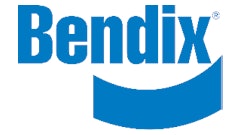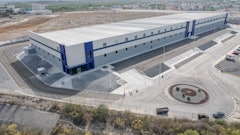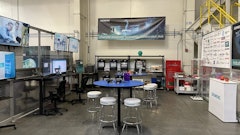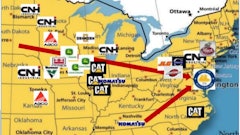Registrations in the first quarter of the year disclose a negative trend for tractors, other self-propelled machinery and trailers. A better trend was reported for combine harvesters. The Italian industries are betting on exports which closed 2012 with significant gains. The president of the manufacturers' federation, Massimo Goldoni affirmed that mechanization is fundamental for Italy's agricultural system and there can be no demobilization for the domestic market.
Agricultural machinery sales on the Italian market in the first quarter of 2012 confirmed the negative trend of the past five years showing a steady downturn in registrations. Following the close of 2012 with a decline of 17.4% in tractors sold, a number slightly over 19,300 units and an historic low since 1954, the 4,751 tractors moved in the first three months of the current year mark a further drop of 3.14% under the figure for the same period in 2012. Also losing ground were transporters, down 24.5%, and trailers, off by 8.8%, whereas the only type of machinery gaining was the combine harvester, ahead 32.3%. This increase, however, was not very significant because of the modest number of machines sold in the first quarter, 45, compared to 34 in the same period in 2012. Setting aside the national averages, considerable variations are seen from region to region with tractor registrations on the increase in the Emilia Romagna Region, up 8.8%, ahead by 16% in Lombardy and by 24% in Puglia against the steep drop in the Campania Region, down 32%, and the declines in Lazio, off 7%, and the Veneto, down 20%. The slowdown on the Italian domestic market is also displayed on the side of imports. National Statistics Institute (ISTAT) data on the balance sheet for 2012 disclose a 6.5% decline in value while the lively performance of foreign markets drove up Italian exports which rose 8.8% in the value of tractors by the end of the year and by 7.7% for other types of machinery. According to this current ISTAT data, a balance of trade surplus was generated by 17,362 tractors with a value of 412 million euro imported in 2012 against Italian exports of 74,762 tractors for a value of 1.664 billion euros.
FederUnacoma President Massimo Goldoni explains, “For years foreign markets have been the best outlet for Italian agricultural machinery manufacturers which supply highly appreciated technologies abroad and are forced to compensate for the grave contraction of the domestic market. But it's unthinkable for the agricultural mechanization industry to give in to a demobilization on the home market because Italy has an important agricultural sector which, without the arrival of new technologies and without the renewal of the machinery inventory, would lose competitiveness and efficiency.” Goldoni went on to say, “Among the initiatives the federation is bringing to the field is a specific survey of farms aimed at updated analyses of the factors making it increasingly difficult and costly for the farm to invest in mechanized means. The more we are able to conduct scientific analyses of the cause of this crisis in investments the better we will be able to develop intervention strategies in political quarters,” he concludes.


























